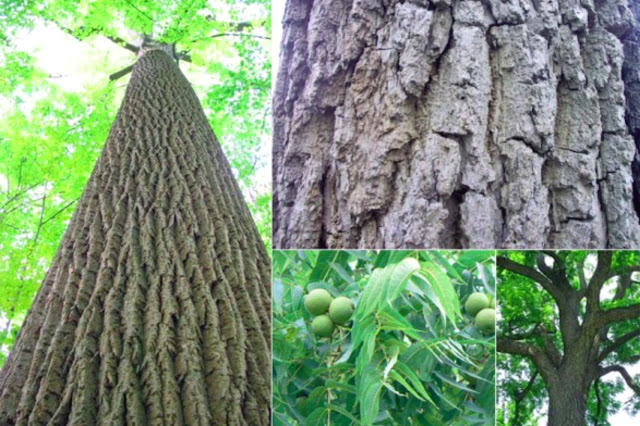 |
| Black Walnut Tree |
The black walnut tree (Juglans nigra) is a tall deciduous tree native to eastern North America. It is a member of the walnut family, which also includes the butternut (Juglans cinerea) and the heartnut (Juglans ailantifolia var. cordiformis). The black walnut tree is valued for its high-quality wood, edible nuts, and medicinal properties. In this article, we will explore the characteristics, uses, and benefits of the black walnut tree.
Characteristics of the Black Walnut Tree
The black walnut tree is a large, spreading tree that can grow up to 100 feet tall and 75 feet wide. It has a straight trunk that can be up to 4 feet in diameter, with a deeply furrowed, gray-brown bark. The leaves are compound and can be up to 2 feet long, with 11 to 23 leaflets that are lance-shaped and pointed at both ends. The leaves turn a bright yellow in the fall before dropping.
The black walnut tree blooms in the spring, producing long, greenish-yellow catkins that are 4 to 5 inches long. The male flowers are on the catkins, while the female flowers are small and inconspicuous, located at the base of the catkins. The nuts ripen in the fall and are encased in a thick, green husk that splits open when the nut is ripe. The nut inside is hard, smooth, and brown, with deep, convoluted furrows.
Uses of the Black Walnut Tree
- Wood: The black walnut tree is highly prized for its wood, which is dark brown and dense, with a fine, straight grain. It is used for a variety of purposes, including furniture, cabinetry, flooring, and gunstocks. The wood is also used for decorative items such as veneers, paneling, and musical instruments.
- Nuts: The nuts of the black walnut tree are edible and are a popular ingredient in baking and cooking. They have a rich, nutty flavor that is prized by chefs and home cooks alike. The nuts are also a good source of protein, fiber, and healthy fats.
- Medicinal Properties: The black walnut tree has been used for centuries in traditional medicine to treat a variety of ailments. The bark, leaves, and nuts contain compounds that have anti-inflammatory, antifungal, and antibacterial properties. Black walnut tinctures and extracts are used to treat skin conditions, digestive issues, and fungal infections.
Benefits of the Black Walnut Tree
- Environmental: The black walnut tree has a number of environmental benefits. It is a valuable food source for wildlife, including squirrels, deer, and birds. The tree also provides shade and shelter for other plants and animals, and its deep roots help to stabilize soil and prevent erosion.
- Economic: The black walnut tree is an important economic resource. Its wood is highly valued and is used in a variety of industries, including furniture, cabinetry, and flooring. The nuts are also a valuable crop and can be sold to food processors or used to make value-added products such as nut butters and baked goods.
- Cultural: The black walnut tree has played an important role in the cultural history of North America. Native Americans used the tree for food, medicine, and crafting, and the nuts were an important trade item. Early European settlers also relied on the black walnut tree for food and medicine, and the wood was highly prized for its strength and durability.
Challenges Facing the Black Walnut Tree
Despite its many benefits, the black walnut tree faces a number of challenges. One of the biggest threats to the tree is the walnut twig beetle, which carries a fungus that causes thousand cankers disease.






